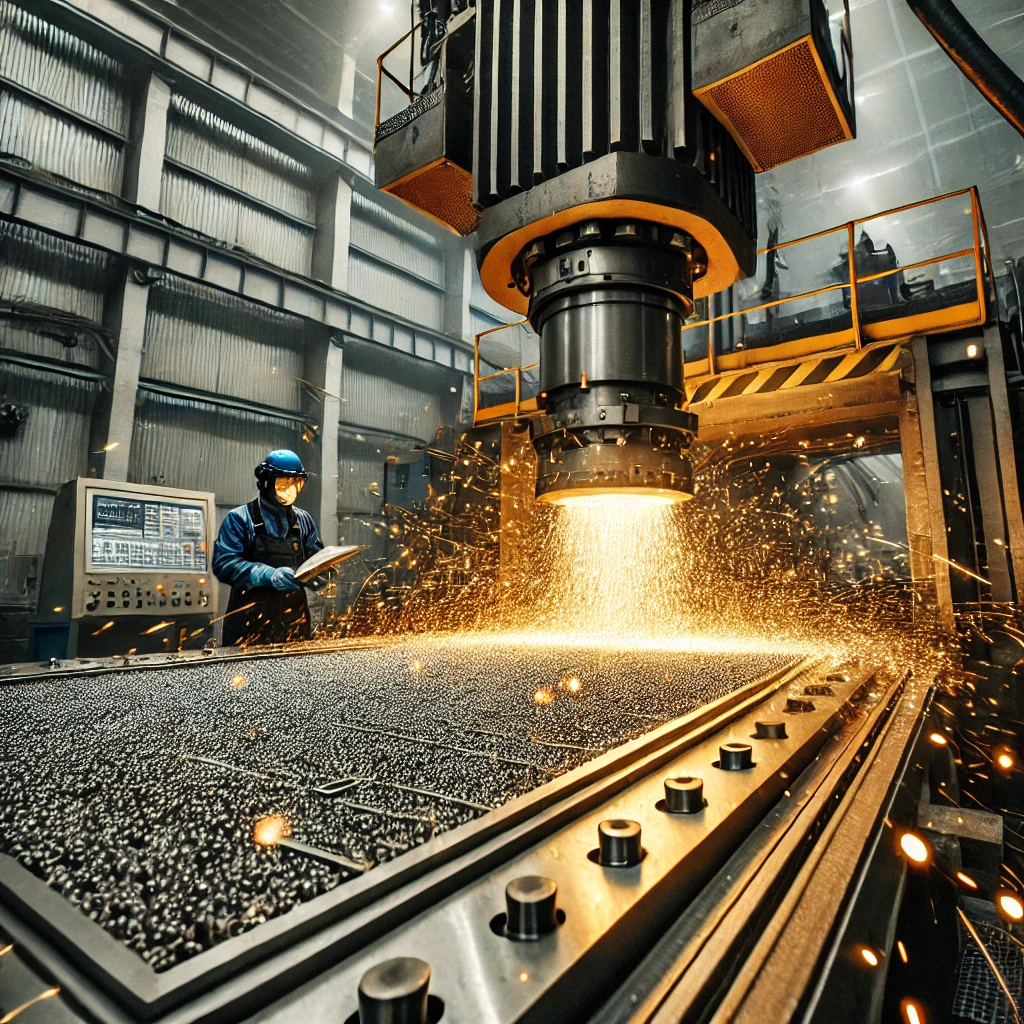What is Shot Peening? 🤔
Shot peening is a cold working process used to improve the surface properties of metal components. By bombarding the surface with small spherical media (referred to as shots), it creates tiny dimples that introduce compressive stresses. This mechanical process enhances the fatigue strength and resistance to stress corrosion cracking of the metal.

How Does Shot Peening Work? 🔧
During the shot peening process, small metallic, glass, or ceramic beads are blasted at the material’s surface at high velocity. As each bead strikes the surface, it makes a tiny dent, plastically deforming the metal. The surface layer tries to resist this deformation, introducing compressive stresses. These stresses help to counteract the tensile stresses that often lead to fatigue failure and cracking.
Key Benefits of Shot Peening 🎯
- Increased Fatigue Life: Shot peening is renowned for its ability to increase the lifespan of components by improving fatigue strength. This is critical for parts subjected to repetitive loading, such as gears and shafts.
- Stress Corrosion Resistance: The compressive stresses developed during shot peening help to resist crack formation under corrosive environments, making it ideal for components exposed to harsh conditions.
- Surface Hardening: Shot peening also increases the hardness of the surface, making the treated part more resistant to wear and erosion. This is particularly useful in automotive and aerospace applications.
- Enhanced Durability: Components subjected to shot peening often exhibit improved durability, especially under mechanical stress or environmental challenges, ensuring better performance and longevity.
Common Applications of Shot Peening 🚗✈️
- Aerospace: Shot peening is widely used on aircraft components like landing gear, turbine blades, and structural elements to ensure they can withstand extreme stresses and remain corrosion-resistant.
- Automotive: Key parts like crankshafts, gear sets, and suspension springs undergo shot peening to extend their service life by reducing fatigue failures and wear.
- Power Generation: Shot peening is critical for turbine components in power plants, ensuring these parts maintain their integrity under high-stress environments over prolonged periods.
- Manufacturing: In heavy manufacturing industries, shot peening is applied to molds, dies, and steel structures, ensuring higher durability and resistance to stress failures.
Shot Peening vs. Other Surface Treatments ⚖️
While there are other surface hardening processes like carburizing and nitriding, shot peening offers the unique benefit of introducing compressive stresses without requiring extreme temperatures. This makes it especially valuable for heat-sensitive components where maintaining dimensional stability is crucial.
FAQs About Shot Peening 💬
Q1: Is shot peening suitable for all metals?
- Shot peening can be applied to most metals, including steel, aluminum, and titanium, but the suitability depends on the component’s design and application.
Q2: How often should components be shot peened?
- Shot peening is usually a one-time treatment, but the frequency may depend on wear conditions and the component’s operating environment.
Q3: Can shot peening repair cracks?
- Shot peening does not repair cracks but rather prevents crack initiation by strengthening the surface. It’s used more for prevention than repair.
Conclusion: Enhancing Durability and Performance with Shot Peening 🛠️
Shot peening is a critical process in extending the life and performance of metal components across a wide range of industries. Its ability to increase fatigue strength, resist corrosion, and improve surface hardness makes it indispensable in the manufacturing, aerospace, and automotive sectors. By choosing shot peening, industries can ensure that their parts remain reliable, durable, and ready to perform even under the most challenging conditions.
